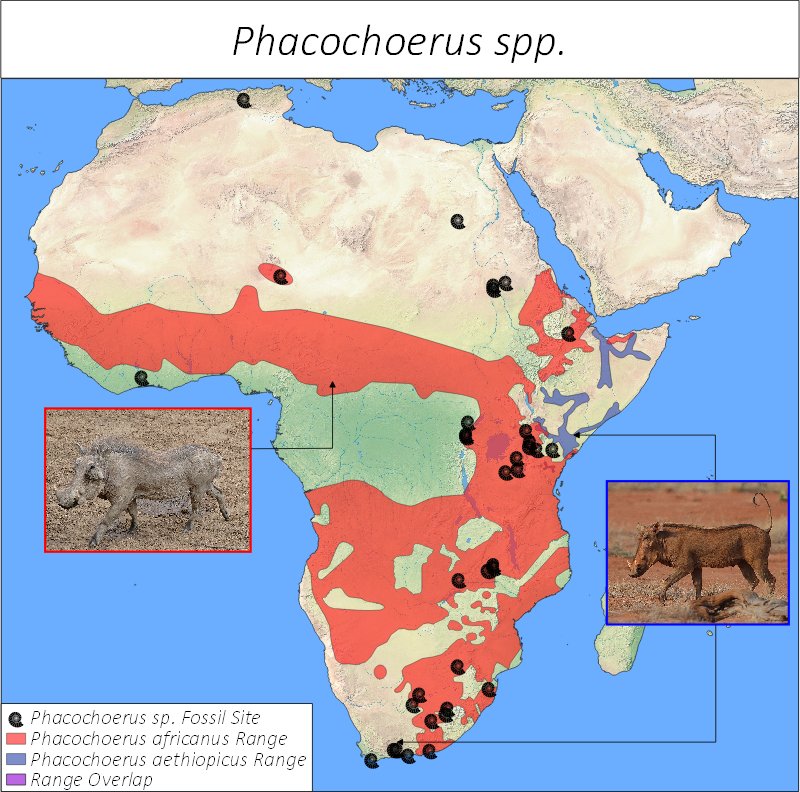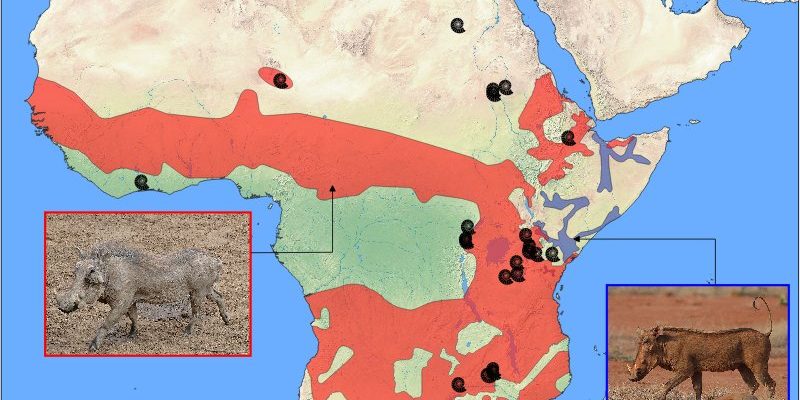
Warthogs are native to Africa, and their habitat is as diverse as the continent itself. You might picture them wandering through grassy plains or bushy regions, but there’s more to their living situation than meets the eye. Let’s break down where warthogs live, what their environments look like, and how they adapt to their surroundings. So, grab a cup of coffee, and let’s dig into the world of these remarkable animals!
Warthog Habitat Overview
Warthogs are primarily found in **sub-Saharan Africa**, specifically in countries such as Botswana, Tanzania, and South Africa. They prefer open and semi-arid environments, where they can easily spot predators and graze on grasses. You might find them in savannahs, grasslands, and even in areas close to woodlands.
What’s interesting is how these animals choose their habitats based on the availability of food and water. Warthogs are herbivores, mostly munching on grasses, roots, and fruits, so their homes are often near reliable water sources. Can you imagine trying to find food and water in a dry landscape? Warthogs have adapted to do just that, making them quite resilient in challenging conditions.
Another key feature of warthog habitats is their burrowing behavior. They often utilize abandoned burrows from other animals, like aardvarks or dig themselves shallow holes to provide shelter. This is important, as it gives them a place to escape the heat during the day and stay safe from predators at night.
Preferred Climate Zones
Warthogs thrive in a variety of climates, but they are **most commonly found in warm, arid regions**. They enjoy temperatures ranging from mild to hot, which makes the African savannah a perfect match. However, they can also tolerate cooler climates, provided there’s enough food and water available.
During the rainy season, their habitat becomes more lush, and it’s a great time for them to feed on the abundant grasses. You might be wondering how they cope with the heat. Warthogs have adapted a few clever ways to manage high temperatures. They often take long naps in the shade during the hottest parts of the day, conserving energy while staying cool.
This adaptability is key to their survival. In a way, it’s like finding your favorite cafe during the summer—somewhere you can chill out and enjoy a refreshing drink until the heat dies down!
Geographic Distribution
Now, let’s talk a bit more about the **geographic distribution** of warthogs. These fascinating animals can be found in many different regions across Africa, with different populations adapted to their unique environments.
In East Africa, you can see warthogs in countries like Kenya and Tanzania, often found in national parks such as the Serengeti. These parks provide a haven for them, as the grasslands are plentiful, and the protected status keeps them safe from hunting. On the other hand, in Southern Africa, they’re commonly sighted in regions like Botswana’s Okavango Delta and South Africa’s Kruger National Park.
Interestingly, the populations can vary, too! Some areas boast healthy warthog populations, while others may have fewer due to habitat loss or hunting pressures. It’s a reminder of how interconnected these animals are with their environments and the importance of conservation efforts.
Habitat Threats and Conservation
Speaking of conservation, **habitat loss** is one of the biggest threats to warthogs. As human populations expand, more land is being converted for agriculture and urban development. This change can lead to decreased food availability and fewer safe places for warthogs to live.
Warthogs are also vulnerable to predation from large carnivores like lions and hyenas. While they are pretty good at spotting danger, losing their habitats can make it harder for them to escape these threats.
Fortunately, conservation efforts are underway in many areas to protect these unique creatures and their habitats. Wildlife reserves and national parks play a crucial role in ensuring their survival. By maintaining these protected areas, we can help ensure that future generations will also be able to enjoy seeing warthogs in the wild.
How Warthogs Adapt to Their Environment
What’s amazing about warthogs is their ability to adapt. They are not just surviving; they are thriving in their environments due to several strategies. For one, their **tusked snouts** allow them to dig and forage for food effectively, whether it’s roots or the grass beneath the surface.
They’re also incredibly social animals. You might often see them in groups, called sounds, which help protect each other from predators. By sticking together, they can be on high alert for any signs of danger. It’s a bit like hanging out with a reliable group of friends—always looking out for one another!
Warthogs also exhibit different behaviors based on their surroundings. In areas where predators are abundant, they might choose to be more cautious and spend more time in burrows. In contrast, in safer regions, you could catch them out in the open, happily munching on grass under the sun.
Understanding where warthogs live and their unique habitats is crucial for their conservation. These remarkable animals play an important role in their ecosystems, helping maintain the balance of their environments. It’s fascinating how every animal, including warthogs, contributes to the web of life around us.
So, next time you think about these tusked wonders, remember how much they rely on their habitats and what we can do to help protect them. A little awareness goes a long way in ensuring that future generations can appreciate the beauty of warthogs in the wild.

